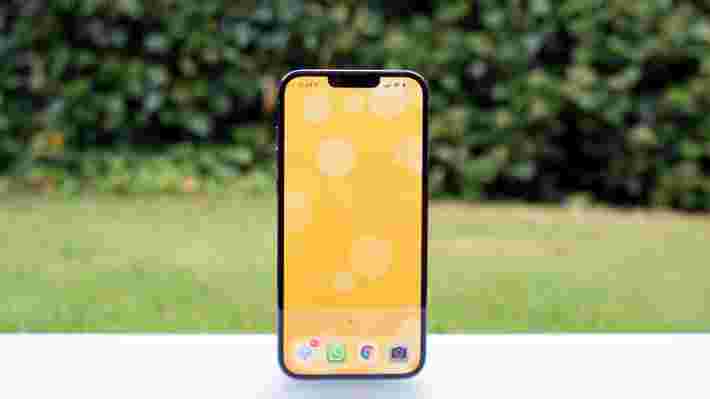The Samsung Galaxy S range already competes with the iPhone range in a lot of ways, and now we can seemingly add one more to the list – software updates, as Samsung will reportedly be offering four years of Android updates and five years of security patches on key devices.
That’s according to a Samsung Galaxy Tab S8 press release that’s been leaked by Evan Blass (who has an excellent track record for leaks). The press release looks like the real deal too, so we have no reason to doubt it.
Specifically, it states that the Samsung Galaxy S21 range (including the Samsung Galaxy S21 FE ), the Samsung Galaxy S22 range, the Samsung Galaxy Tab S8 range, the Samsung Galaxy Z Flip 3 , and the Samsung Galaxy Z Fold 3 will all get this many updates.
With many Android devices only getting two years of updates, that’s a huge deal, and especially notable for older devices like the Samsung Galaxy S21 range. Samsung already had much of the competition beat with those phones by offering three years of Android update and four years of security patches – something it was widely praised for, but now it’s seemingly adding an extra year to each.
That will mean these devices get major Android updates for longer than any other Android device is currently set to – even having the Google Pixel 6 range beat.
Elsewhere this press release largely reiterates things that we’ve already heard about the Samsung Galaxy Tab S8 range. There’s an almost complete specs list for example, but Blass had already leaked that .
There are a few details that we hadn’t been totally clear on though, including the release date. This press release states that pre-orders will open on February 9 (unsurprisingly, since that’s when the slates are expected to be announced), but that they’ll ship on February 25.
It also adds that if you pre-order a Samsung Galaxy Tab S8 Ultra you’ll get a Book Cover Keyboard thrown in, while if you pre-order a Galaxy Tab S8 or Tab S8 Plus then you’ll get a Book Cover Keyboard Slim.
There’s also mention of an Armor Aluminum frame, which supposedly makes these tablets 30% more scratch-resistant and 40% less likely to bend than the Samsung Galaxy Tab S7 range.

Analysis: other companies – and even Samsung – need to do more
If Samsung really is going to offer four years of Android updates and five years of security patches for all the devices mentioned above then that’s great news, but it could still do more.
While that would have every other Android-maker beat, it would still leave Samsung trailing Apple, which is currently supporting six-year-old phones still. And given how expensive high-end handsets and tablets are, it’s only reasonable to expect them to be kept up to date for a long time.
Plus, while it’s great that Samsung is seemingly offering these extended updates for some pre-existing devices too, the majority of the company’s phones aren’t listed as getting them.
Really though, it’s everyone else in Android land that needs to step up. With the two most high-profile phone brands in the western world now offering so much support, other companies can’t afford not to follow suit if they want to compete.
SSDs could squeeze hard drives out the data center sooner than you think
Solid state drives ( SSDs ) could push traditional hard disk drives ( HDDs ) to the fringes of the data center as early as 2025, Huawei predicts.
Speaking to TechRadar Pro in Barcelona ahead of MWC 2022 , the company’s VP of Data Storage, Fupeng Zhang, explained that the superior performance of flash storage and falling prices are squeezing HDDs from the market.
Zhang says the process will be a gradual one, but anticipates that SSDs will account for as much as 80% of non-archival data center storage by 2025, up from roughly 30% today.
The all-flash data center
As Zhang explains, there are three main storage attributes that enterprises and cloud providers are striving to optimize: capacity, reliability and performance.
The mix of storage hardware required depends entirely on the specific use case. In some instances, capacity and reliability might be the most important factor (e.g. archival storage). But in other scenarios, performance might be the chief concern.
Although mechanical hard drives deliver on the capacity front, they lag significantly behind flash storage when it comes to performance, which is crucial for enabling the kinds of bleeding edge use cases that will also take advantage of technologies such as 5G and AI. “Without proper performance, capacity means nothing,” Zhang noted.
As such, Huawei believes that data centers will steadily migrate to an all-flash model, particular as the cost of flash storage falls. The company’s current focus is on helping businesses to manage this transition in a way that is not disruptive to operations.
“The all-flash data center is a vision for the future,” explained Zhang. “We believe we should build systems with an all-flash mindset, but with backwards compatibility.”
“By 2025, the cheapest flash storage may be 2.5 times more expensive than the cheapest hard drives, but it could also allow for 2.5 times greater compression, so the cost will balance out.”
Even in the context of backup storage, Zhang believes the days of the HDD are numbered. Once the transition to the all-flash data center is complete, the need to restore data rapidly after a cyberattack or data loss incident will necessitate a shift to flash-based backup as well.

Data overload
As the volume of data produced by internet activity, digital devices and IoT sensors continues to expand at an aggressive rate, businesses are running out of time to solve a critical problem: where to put it all.
According to a recent IDC report , the quantity of data created within the next five years will be greater than double the amount generated since digital storage came into use.
Although only a small percentage of the 64.2 ZB (68.9 billion TB) created in 2020 was stored for the long term (the rest was either overwritten or temporarily cached), global data storage needs are still outpacing the expansion of total capacity. As Zhang puts it, “supply of capacity is decoupling from demand”.
Asked whether he believes that innovation in the storage sector will be sufficient for total available capacity to keep pace with demand in the years to come, Zhang suggested he is optimistic.
He says research into DNA storage and other emerging technologies shows promise, at least on the archival storage front, and that innovations on the algorithm side will allow for greater compression, and therefore greater storage density.
“Data is no longer just information, it’s an asset - the oil of the digital era. Technologies like 5G, cloud and edge computing are the tools, the data is the fuel, and the storage medium is the fuel tank that guarantees the supply,” said Zhang.
“We are improving on the storage media, networking and compute performance front; with these three improvements, capacity will meet the need.”
MWC (Mobile World Congress) is the world's largest showcase for the mobile industry, stuffed full of the newest phones, tablets, wearables and more. TechRadar is reporting on the show all week. Follow our MWC 2022 live blog for the very latest news as it happens and visit our dedicated MWC 2022 hub for a round-up of the biggest announcements.
Disclaimer: Our flights and accommodation for MWC 2022 were funded by Huawei, but the organization had no editorial control over the content of this article.
The Sony LinkBuds are the weirdest wireless earbuds I’ve ever tested, and I’m in love
True wireless earbuds haven’t been around for that long (relatively speaking, anyway), but they quickly evolved into two main form factors: stem earbuds like the Apple AirPods , and rounded stemless designs that fit snugly into your ear.
You might think that’s about as much variety as we need when it comes to earbud design, but Sony has just shaken things up with the launch of its latest wireless earbuds . The Sony LinkBuds are the world’s first open-ring in-ear headphones , a design that leaves your ear canal totally free to hear your environment while you enjoy your music. They’re also Sony’s smallest earbuds to date.
Open up the Sony LinkBuds’ tiny charging case and you’re presented with a pair of shiny rings attached to bulbous housings – quite unlike any true wireless earbuds I’ve seen before. With no eartips to place in your ear canal, getting them to fit is an experience in itself; helpfully, Sony provided me with an instructional video.
With no seal against your ear canal, you might think that the LinkBuds would sound tinny, or lacking in bass response; usually, in-ear headphones are positioned so that the driver sits close to your eardrum, giving the effect of powerful bass frequencies.
Instead, the LinkBuds’ 12mm drivers encircle your ear canals – but that doesn’t mean they sound any less powerful than some of the best true wireless earbuds you can buy today. Sure, they aren’t as bassy as models like the NuraTrue , but the LinkBuds sound rich, detailed, and well balanced.
I’ll always prefer the immersive sound of a pair of over-ear headphones (my pair of choice are the Sony WH-1000XM4 ), but listening to the lush three-part harmonies of The Beatles’ dreamy motown-style bop This Boy was as lovely as I’d hoped.
The benefit of the open-ring design is that you can still hear what’s going on around you as you listen to music, which is incredibly useful if you work in an office and need to be available for quick conversations, or when you’re cycling and need to be aware of your environment.
Sony takes this principle one step further as well, by including its Speak-to-Chat feature, which pauses your music when the earbuds detect your voice.
Head-tapping fun

The unique design of the Sony LinkBuds is complemented by some rather ingenious controls. As on many other true wireless earbuds , you can tap the housings to control your music playback – although as the LinkBuds are so small, it can be tricky to tap them accurately enough to get the response you want.
To get around this, Sony has implemented a feature called Wide Area Tap, which allows you to double or triple-tap the area in front of your ears to control the earbuds. That’s right – you need only tap your face to pause/play your music or skip to the next track.
I can’t get enough of this feature. I’ve tried earbuds in the past that make use of gesture controls – the TicPods Pro 2 allow you to accept calls by nodding your head and reject them by shaking it – but none have got it right until now.
Tapping your temples is such a subtle, easy gesture, and the sensors on the LinkBuds have no problem registering the difference between two taps to pause/play my music and three taps to skip to the next track. It’s the kind of feature I can see being adopted by true wireless buds manufacturers across the board – and I wouldn’t be surprised if the rumored AirPods Pro 2 came with similar capabilities.
All good things must come to an end
It’s safe to say that I’ve fallen in love with the Sony LinkBuds. But, like many love stories, the ending is bittersweet.
For all of the positive things I have to say about the LinkBuds, there’s no getting around the fact that they just don’t fit comfortably in my ears. It’s a problem I’ve always had with earbuds that require you to shove the housings into the concha of the ears, and it means I find the LinkBuds too painful to wear for long periods of time.
Removing the LinkBuds after wearing them makes me physically wince. My ears ache as much as my heart – but I can’t really blame Sony for the fact that my uniquely small ears can’t handle the smallest earbuds it’s ever made.
So, while I can’t continue my relationship with the LinkBuds for much longer, lest my ears actually fall off – although I’ll tough it out for long enough to file my full review – I bear no ill will towards their makers.
In other words, Sony, it’s not you – it’s me.